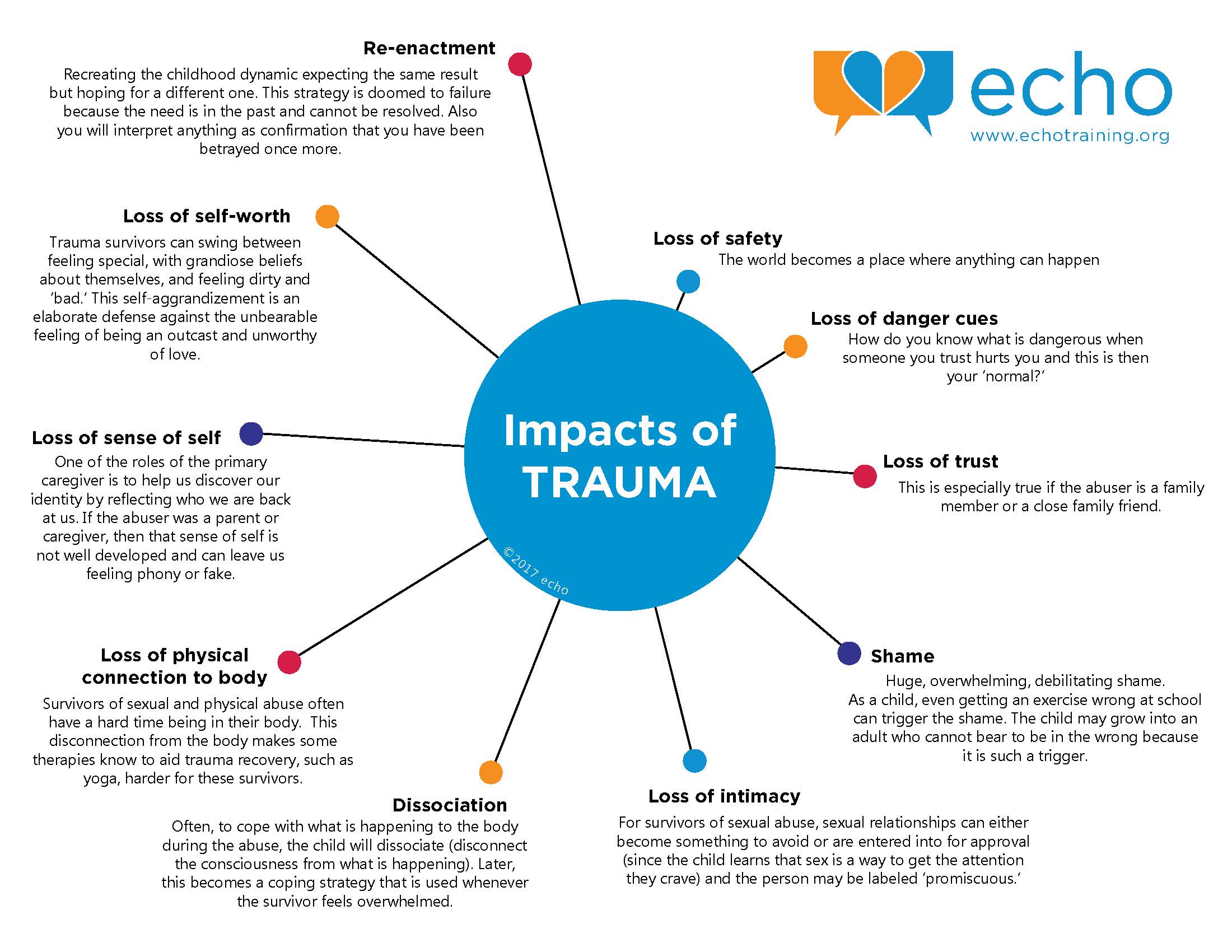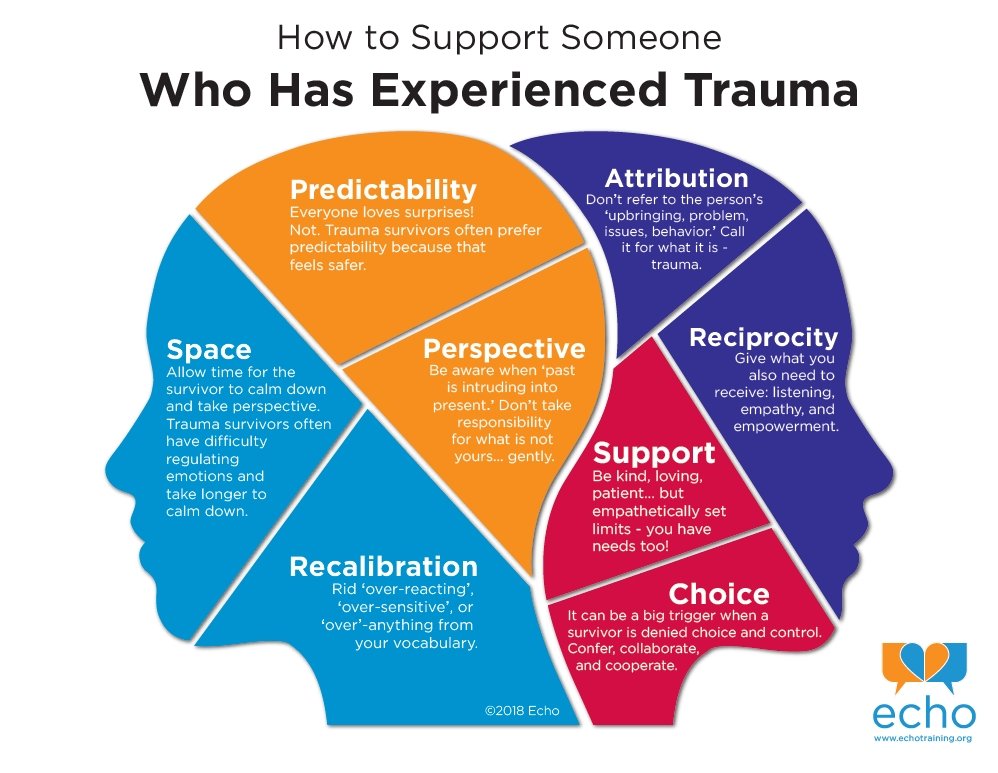Childhood Trauma And Emotional Regulation
Childhood trauma is an unfortunate reality that many individuals face. It can have long-lasting effects on emotional well-being and overall life satisfaction. In order to promote healing and improve emotional regulation, it is essential to understand the impact of childhood trauma and implement effective self-care strategies. In this article, we will explore the connection between childhood trauma and emotional regulation, providing valuable insights and practical tips for overcoming past trauma and creating a better future.
1. Understanding Childhood Trauma

Childhood trauma refers to any distressing or harmful event that occurs during one's early years. It can include physical, emotional, or sexual abuse, neglect, witnessing violence, or experiencing the loss of a loved one. These traumatic experiences often disrupt a child's sense of safety, security, and trust in themselves and others.
Children who face trauma at a young age may experience heightened levels of stress, fear, and anxiety. This can have profound effects on their emotional regulation and ability to cope with life's challenges as they grow older.
To begin the healing process, it is crucial to acknowledge and understand the impact of childhood trauma on emotional regulation. Awareness allows individuals to recognize their struggles and take steps towards building a healthier emotional foundation.
2. Emotional Regulation: Building Resilience

Emotional regulation refers to the ability to effectively manage and respond to one's emotions. For individuals who have experienced childhood trauma, this can be particularly challenging. However, with the right strategies and support, it is possible to build resilience.
Here are some practical tips for improving emotional regulation:
2.1 Practice Mindfulness
Mindfulness is the practice of bringing one's attention to the present moment, without judgment. Engaging in regular mindfulness exercises, such as deep breathing or meditation, can help individuals regulate their emotions and reduce stress levels.
2.2 Seek Professional Help
Therapy can be a valuable tool for healing from childhood trauma and developing healthy emotional regulation skills. Licensed therapists or counselors can provide guidance, support, and specific techniques tailored to individual needs.
2.3 Engage in Self-Care Activities
Self-care is essential for promoting emotional well-being. Engaging in activities that bring joy and relaxation can help individuals regulate their emotions and reduce the impact of past trauma. This can include hobbies, exercise, spending time with loved ones, or pursuing creative outlets.
3. Self-Care Strategies for Healing
Developing a self-care routine is an integral part of overcoming childhood trauma and improving emotional regulation. Below, we discuss three important strategies for implementing self-care activities into your daily life:
3.1 Prioritize Physical Health
Engaging in regular exercise, eating a balanced diet, and getting enough sleep are essential aspects of self-care. Physical health plays a crucial role in emotional well-being, as it provides a solid foundation for managing stress and regulating emotions.
3.2 Cultivate Supportive Relationships
Building strong, supportive relationships can significantly impact emotional regulation. Surrounding yourself with trusted friends and loved ones who provide understanding, empathy, and a safe space to express your emotions can be extremely healing.
3.3 Engage in Therapeutic Activities
Engaging in therapeutic activities, such as journaling, art therapy, or attending support groups, can offer additional support in the journey towards emotional regulation. These activities provide outlets for self-expression and allow for deeper self-reflection.
Frequently Asked Questions (FAQ)
Q: Can childhood trauma be completely overcome?
A: While the impact of childhood trauma can be long-lasting, with proper support and self-care, individuals can heal and improve their emotional regulation. It is important to remember that healing is an ongoing process, and seeking professional help can greatly assist in this journey.
Q: How can emotional regulation benefit my overall well-being?
A: Emotional regulation allows individuals to effectively manage stress, improve relationships, and enhance overall life satisfaction. It nurtures resilience and provides the necessary tools to cope with challenging situations.
Q: Are there any specific therapies designed for individuals with childhood trauma?
A: Yes, there are various therapeutic approaches that specifically address childhood trauma. Some common therapies include cognitive-behavioral therapy (CBT), Eye Movement Desensitization and Reprocessing (EMDR), and Trauma-Focused Cognitive Behavioral Therapy (TF-CBT). Each therapy approach is unique, and finding the right fit may require some exploration with a qualified therapist.
Remember, healing from childhood trauma and improving emotional regulation is a personal journey. With patience, self-compassion, and the right resources, one can overcome past traumas and create a brighter future. Take the first step today towards a healthier emotional well-being!
Pin By Melanie Beebe On Counseling...it's What You Do! :) | Emotional
 Image Source : www.pinterest.com
Image Source : www.pinterest.com emotional ptsd bruce regulate children dysregulation learning sensory emotions interventions trauma relate regulated understanding highly fagus
Pin On Trauma, Emotional Regulation
 Image Source : www.pinterest.com
Image Source : www.pinterest.com Online Essay Help | Amazonia.fiocruz.br
 Image Source : amazonia.fiocruz.br
Image Source : amazonia.fiocruz.br Pin On KIDS Matter Australia
 Image Source : www.pinterest.com
Image Source : www.pinterest.com trauma development child brain space making learning areas pdf emotional attachment affect regulation affects kids australia life theory matter memory
Childhood Trauma
 Image Source : www.pinterest.com
Image Source : www.pinterest.com trauma childhood emotional therapy addiction intelligence abuse mental regulation learning tools social health play
Trauma And The Brain Worksheet
 Image Source : materiallibrose99.z20.web.core.windows.net
Image Source : materiallibrose99.z20.web.core.windows.net Thread By @GSNAfrica: 𝗧𝘆𝗽𝗲𝘀 𝗼𝗳 𝗧𝗿𝗮𝘂𝗺𝗮 (thread) Individual Trauma
 Image Source : threadreaderapp.com
Image Source : threadreaderapp.com ptsd informed therapy brain survivors aces effects infographic assault survivor behavior infographics awareness victim advocacy cycles stress disorders healing incident
Workshops - BK-Mitarbeitercoaching
 Image Source : bk-mitarbeitercoaching.de
Image Source : bk-mitarbeitercoaching.de Pin on kids matter australia. Pin on trauma, emotional regulation. Trauma childhood emotional therapy addiction intelligence abuse mental regulation learning tools social health play. Pin by melanie beebe on counseling...it's what you do! :). Thread by @gsnafrica: 𝗧𝘆𝗽𝗲𝘀 𝗼𝗳 𝗧𝗿𝗮𝘂𝗺𝗮 (thread) individual trauma